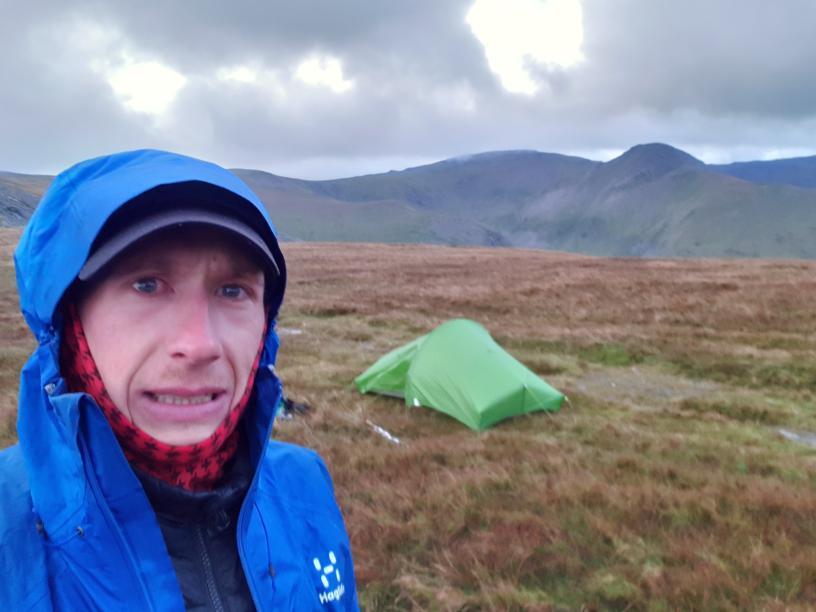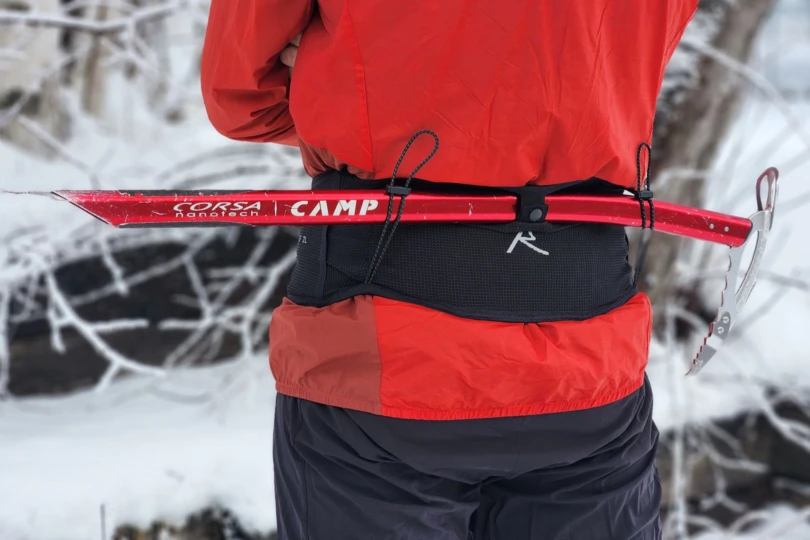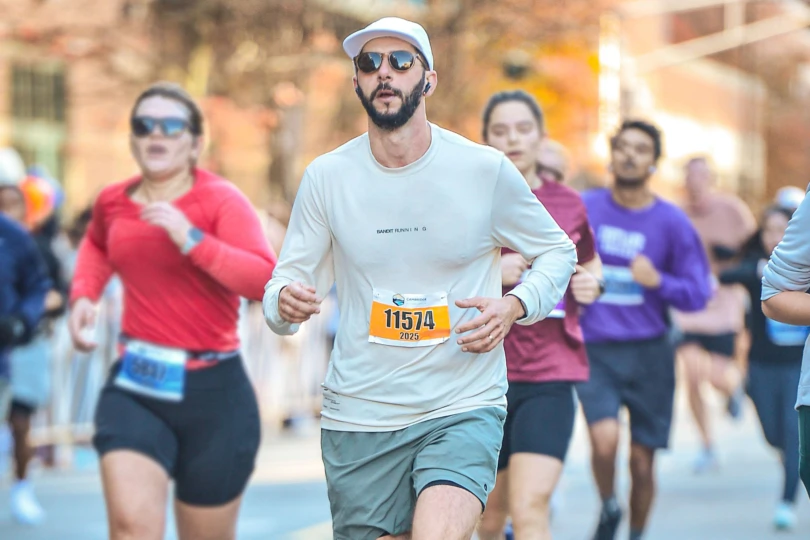On Sept. 10, Welsh ‘mountain runner’ Will Renwick began a south-to-north run across Wales — and summited every peak at least 2,000 feet high on the way.
The task would amount to 500 miles of running and 189 summits. Renwick set a time limit of 3 weeks for the project, determined to get back to his writing job before he’d used up all his leave. The run would raise money for Mind Over Mountains, a mental health charity close to Renwick’s heart.
On Oct. 4, he pulled up to Conwy Castle, his designated endpoint in North Wales. He was a few hours late on his prescribed arrival, but he’d proven himself up for the challenge.
He had overcome injuries and heinous weather as well as generated a pile of money for charity. To his surprise, the BBC even arrived at the castle to interview him for a feature.
View this post on Instagram
GearJunkie caught up with Renwick to talk about ultrarunning, having (and not having) the right gear, and the ramifications of surviving on couscous.

Setup, Injuries, and Gear
GearJunkie: What was the impulse for the run? What was the daily process like?
Renwick: I wanted to do it in 3 weeks so I wouldn’t use up all my leave at work. So, averaging out the 500 miles, I would need to cover about 25 miles a day.
But I got an ankle injury on the second day! I probably jumped in too fast, which I tend to do — didn’t train properly, just figured I’d get used to it as I went along.
Tell me about the injury. I didn’t realize it happened so early on.
First, I felt a niggle in my left knee, and that almost made me panic. I’d gotten a similar feeling before, and it forced me to stop running altogether. But I kept going, and pretty soon, the compensation made my right ankle flare up.
I got 4 days into the run and realized I needed a day off. So I enjoyed a day at the pub and put some ice on it. After that, I figured it was OK for running, and it just healed as I went.
Anyway, the day off meant that I had to cover more ground each day in order to make the 3 weeks. I’m a bit of a purist when it comes to running. I don’t have a watch, I’m not looking at my distance and timing — I just run.
So I was running from sunrise to beyond sunset, as far as the landscape and weather would allow me. Some days when it was easier, I’d do 30-plus [miles]. Some days, in higher-density mountains, I’d only cover about 20-21, but it felt like 30 because of the terrain.

Some people would probably be shocked you didn’t take a watch. What did you include in your kit, and how did you decide to take it?
I don’t like to get too fussy [about gear]. But for this objective, I realized I had to be choosy and really count every gram. I was super light at the start, around 6 kg [13.2 pounds].
For sleeping, I started out with a Therma-a-Rest Vesper 45F down quilt and a Six Moon Designs Lunar Solo tarp tent. They didn’t stay with me because the conditions just got too brutal.
No offense, but that kind of kit is made for an American summer, and it did not cut it in a British summer/autumn [laughs].
[Laughs] Yes — the weather was awful, right?
With the wind chill, it was getting down to -3 degrees Celsius [26 degrees Fahrenheit] in the last week. Daily temps toward the end would be around 7 to 8 degrees C [45 degrees F].
There wasn’t much rain for the first week, but it just increased over time. There was one morning when I woke up, put my jacket on, and it was just completely soaked. Then I realized the rest of my kit was sodden. There’s nothing more demoralizing than being wet all day, then crawling back into wet gear at night.
So I swapped the quilt for a sleeping bag, and some friends gave me an actual tent. I ended up with a 40F [comfort] Montbell Seamless Down Hugger bag and a Vaude Lizard Seamless tent.
That worked a lot better, especially during the last week when the weather just tested me every day and night — in Snowdonia too, the worst possible place [mountain district]!
Better you than us. What other gear did you use?
I used a Six Moon Designs ultralight pack, 30 L or less. It performed really well — very light and practical for running. My jacket was the Haglofs L.I.M., and I was impressed with it all around.

The shoes proved tricky — I got the worst blisters you could imagine. I wore the Saucony Peregrine 11. I don’t want to blame them too much, because it’s not necessarily shoes that cause blisters.
But there were a couple identifiable issues. There’s a foam insert below the insole that kept trying to creep out. All in all, it was a bit of a nightmare.

For a stove, I chose the Jetboil Stash, which is among the lightest personal stoves on the market. I thought it was absolutely excellent in terms of weight, burner efficiency, and boil time.
I can’t fault it. I can, however, fault the food I was preparing with it. Living off a diet of instant mash, noodles, and couscous has its drawbacks. I knew I was probably going to lose some weight on the trip, but I’m the skinniest I’ve ever been!

Charity, Finish Line Fever, and the Upshot
If not nutritional sustenance, what kept you going? You were running for charity, right?
Yes. The charity I’m fundraising for is called Mind Over Mountains. They’re small and very young, but they do incredible things. The gist is they provide memorable outdoor experiences for people going through difficult experiences with their mental health and well-being.
Mind Over Mountains takes them to natural places and wild landscapes they normally wouldn’t have access to. The charity provides company as well as professional counselors on the hikes and just facilitates a change of scenery.
I know from past experience, and observing what they do, that they’re not just changing lives — they’re saving lives.

I’ve been very proud of working with them and have been able to raise £11,000. That’s already blown my £2,000 goal out of the water, and I hope it just keeps adding up.
Any scary moments out there? Gnarly or specific events that stand out in your memory?
I don’t think there was a life-and-death moment. But by the end, I really wanted to make up the mileage. I think you’d call it finish line fever? So I was putting in big days. That meant running way beyond sunset, which could be really atrocious because of the weather.
Running in the dark high up on craggy mountains, in blowing [sleet]. My head torch wouldn’t light the way — just illuminate the mist. My feet were slipping all over the place on rocks. I had a number of nights where I realized I had to stop or else something bad was going to happen.
On the last night, I climbed into my tent soaking wet after hours of that kind of running. The wind was battering the tent, and I just kinda sat there in all my damp stuff. I didn’t even get into my sleeping bag. I thought, “I can’t do another night of this.”

24 hours later, I’m very glad I got through it all and finished it. And I’m already starting to think, “That was pretty cool, actually.” An experience like that entails a lot of suffering, but you get back to mortgage payments, phone bills, and so on and realize that’s even worse! [Laughs].
Well, that’s a nice prompt for our last question. What’s next?
Primarily, I’m a long-distance hiker. I’d never done any proper endurance running before this. But there were points when I’d been running all day, and even though I was pretty wrecked, I still felt good. I did think maybe I do kind of have a long-distance running ability.
You “think” so? [Laughs]
[Laughs] Yeah, maybe. Anyway, I’m quite interested in the Paddy Buckley Trail running round in Wales. In the back of my mind, I’d like to see if I can have a crack in finishing that in 24 hours, which is the target that everyone sets for themselves.
But it’s just an idea. Don’t tell my girlfriend I said so!







